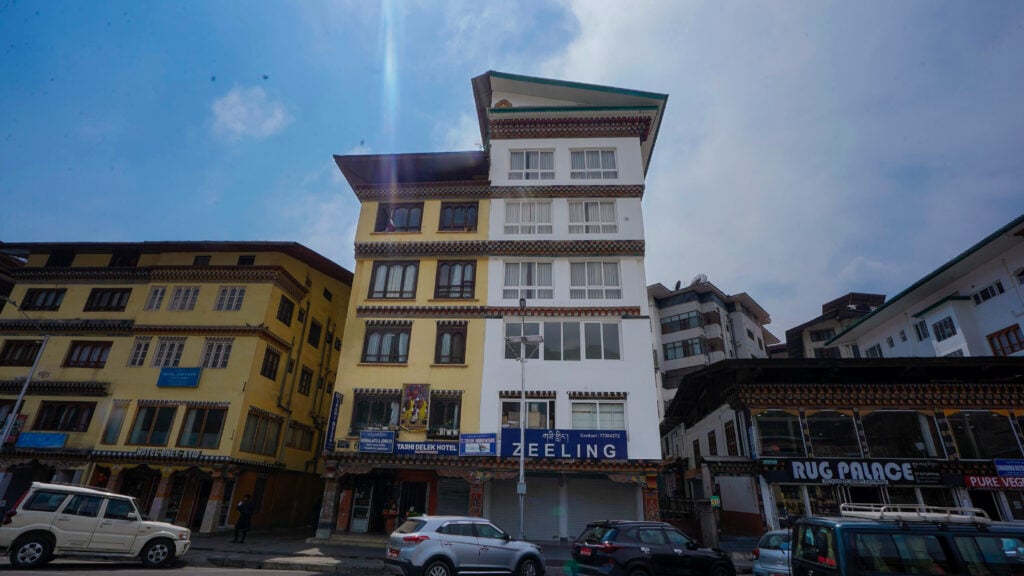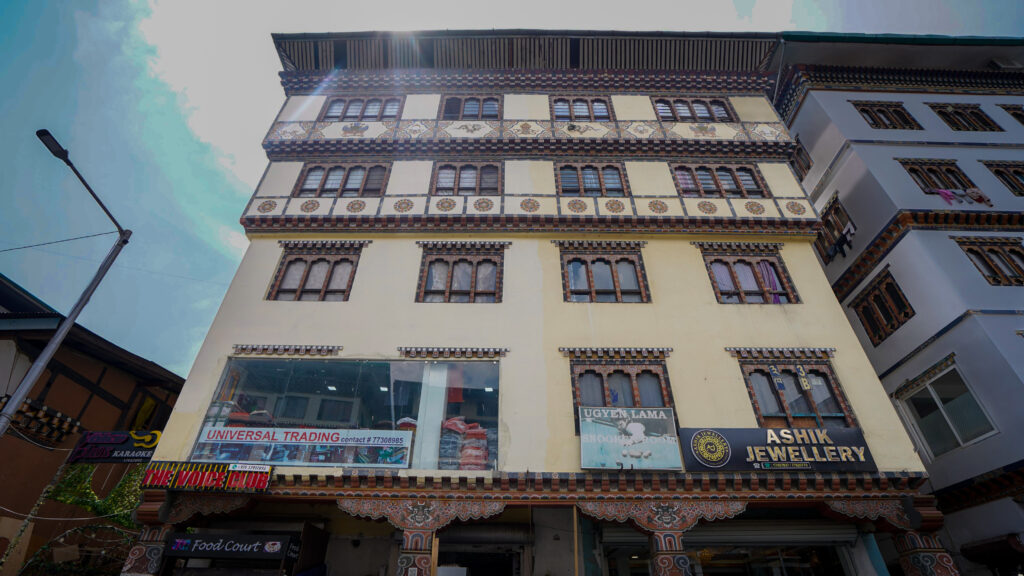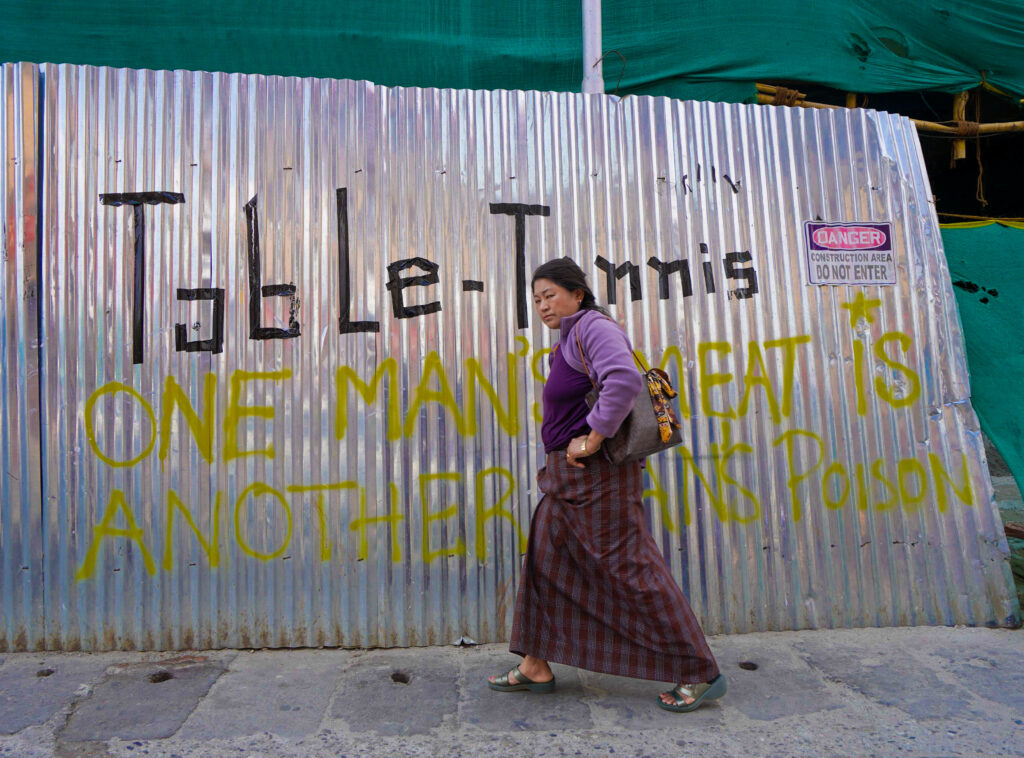I was born and raised in Thimphu but moved away and always made it back for the holidays. However, the town had drastically changed after I returned from the U.S.. What once felt like ample space lately only feels like blocks of white clustered together.
I didn’t like that so many buildings had popped up, stripping away past memories for something so bland.
A lot of the developments in Thimphu took place while I was away, attending college. Before the town grew, we could easily spot the mountains, the one I still look out for in particular. I remember praying to that mountain, and sometimes prostrating to it, when we would see the moon behind it. Me and my cousins believed that on the other side of that mountain lay America. We believed that when it was night time here, it was morning there. But the way I saw the mountains changed one summer, when on a night out I saw the silhouette of the mountains and found them overbearing. They made me feel claustrophobic, like the word “land-locked,” a word used to describe our country. Even for tourists visiting, Thimphu can come across as depersonalized compared to the rest of Bhutan.
Norzin Lam 1: A Street I didn’t Even Know Existed
As content manager, I had been looking for ways to revamp our itinerary for Thimphu. I felt we weren’t fully exploring Thimphu and that we were only sticking to select places. So I spoke to our tour guide, Sonam, whose sentiments weren’t new. Thimphu was too modern, unlike the more rural areas where guests were actually acknowledged by the locals. I had heard this from our manager too. While my conversation with Sonam didn’t really lead to anything, I let things be, as I’d been doing for sometime. Later, during a conversation with my cousin, she pointed out that most of the buildings in town had dual ownership, divided within the family. I (we) saw the division of the owners via the building’s two different paint works, some more evident than others. I found this as a passive-aggressive way of cooperating, of managing wealth. The observation highlighted the nuances of Bhutanese society, an issue that doesn’t always get discussed. For many tourists, Bhutan is simply the “Happiest country in the world.”


However, some houses like the building we lived in didn’t have two different paint works, despite multiple ownership. I shared this observation with our manager as a different way for guests to experience Thimphu. On this journey to discover our town differently, I also noticed graffiti art. Growing up, the only thing close to graffiti I saw was scribbles in the school bathroom.

I experienced all of this along Norzin Lam 1, a street I didn’t even know existed before writing this article. One night, as I walked home with my sister, I remembered the slide we once played on. Long gone now. But kids still play nearby, riding their bikes, making memories, and life went on, now I a spectator.
Book your trip to Bhutan today! Contact us at [email protected] or call +975 1711-2338 any time, anywhere!


